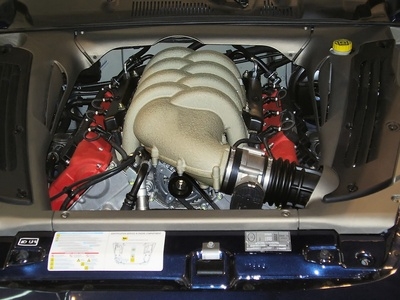
Technology is wonderful, but hot rodders long ago realized that there can be too much of a good thing where electronics are concerned. Although fuel injection helps the car run better in any driving conditions, it can also become an incredibly expensive nightmare in a modified engine.
At the end of the day, both carbs and electronic fuel injection (EFI) do the same thing: regulate air and fuel into the engine. EFI allows the fuel system to adapt to outside conditions, such as temperature and pressure, as well as internal conditions, like coolant temperature and the air/fuel ratio. A carb can't do any of those things but can run the engine under most conditions just as well.
The most obvious things you'll need are a new intake and carburetor, but you'll also need to acquire a distributor designed for non-fuel-injected (1985 and earlier) 302 Mustangs and a throttle kickdown cable. The EFI fuel pump won't work with the carb; the simplest solution is to buy an aftermarket drop-in, low pressure pump (6 to 7 psi) for about $100. You can also use a cheap universal external pump, but you'll need to fabricate a custom fuel pickup to sit in place of your stock fuel pump. You'll also need the throttle cable bracket for the manifold.
Obviously, you won't be using the stock electronics or computer, so trace the wiring harness back to the inside of the car and ditch it. Or don't: the scrap value of all that copper might be enough to buy you a couple of value meals at your local drive-through. The only things you'll need to keep are the oil pressure sender/harness, temperature sender/harness, tachometer feed, ignition and main power wire to keep the dashboard working. If you've got the extra $200 sitting around, then you can simplify the installation even more by putting in some aftermarket gauges to eliminate all of the original interfaces. A manual with a wiring diagram (like those sold by Chilton and Haynes) will come in handy here.
Brand new, you can expect to look at about $200 for a manifold, $350 for a carb, $200 for a distributor, $100 for a fuel pump, $30 for a kickdown cable and another $200 in miscellaneous for a grand total of about $1,100. For used parts, expect to pay about $100 for a manifold, $150 for a carb, $50 for an external pump, $50 for a distributor, $30 for the kickdown and the same $200 in miscellaneous for $600. That's a bargain when you consider that just reprogramming the stock computer can run upwards of $500.
If you're savvy enough to perform this swap, then odds are you're already familiar with the quirks of a carbureted vehicle. It's going to start hard, idle like garbage when it's cold, require hours of jet and valve swapping to fine-tune the air/fuel ratio and will need a certain appreciation for personality in an engine. However, running a carb will allow you to run whatever pistons, heads and cam you desire, permit easy tuning with basic hand tools and will simplify diagnosis when something inevitably goes wrong.